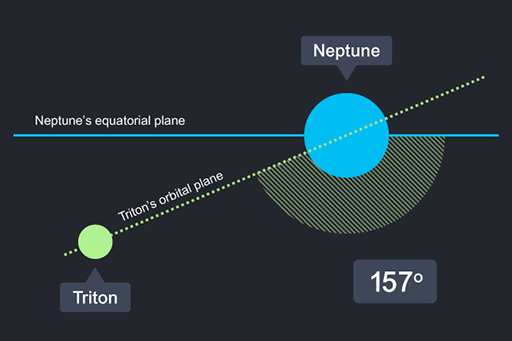2.5 Triton’s orbit around Neptune
Triton, Neptune’s largest moon, stands out among retrograde moons. Although most retrograde moons are small and distant from their planets, Triton is large and its orbit is relatively close to Neptune.
Moons with retrograde orbits tend to have much more inclined orbital planes relative to their planet’s equatorial plane than those with prograde orbits. In the case of Triton, this inclination is currently around 157°. Such moons are thought to have been captured and then held in their unusual orbits by their planets, rather than forming in situ.
You may wonder why the inclination of Triton’s orbit is shown as 157° rather than 23° (i.e. 180°−157°). This is just a way of showing that Triton’s orbital motion is retrograde. If it was travelling in the other direction round the same orbit it would be described as a prograde orbit inclined at 23°.

